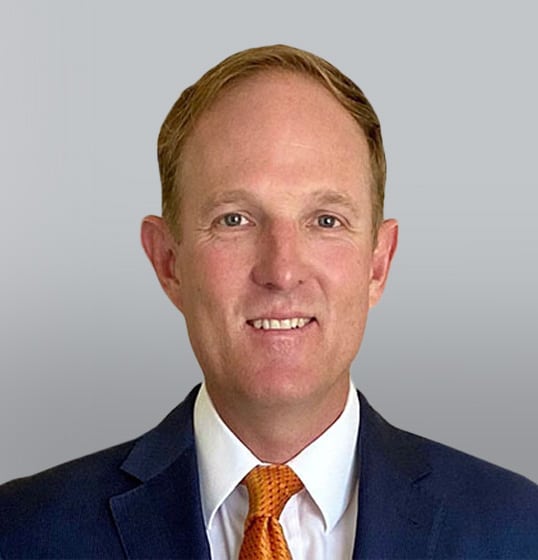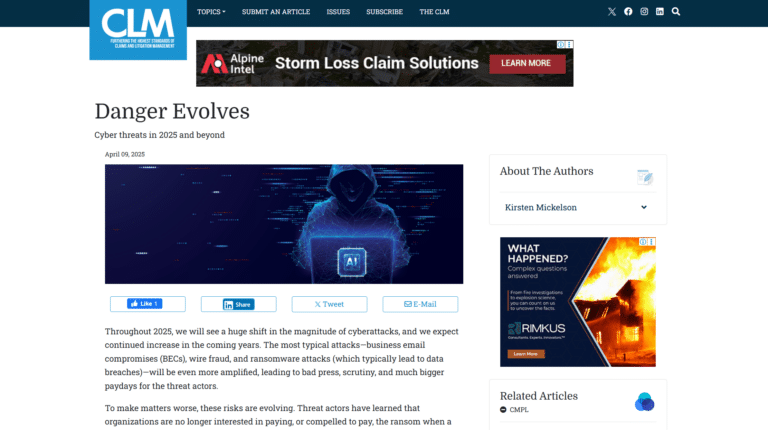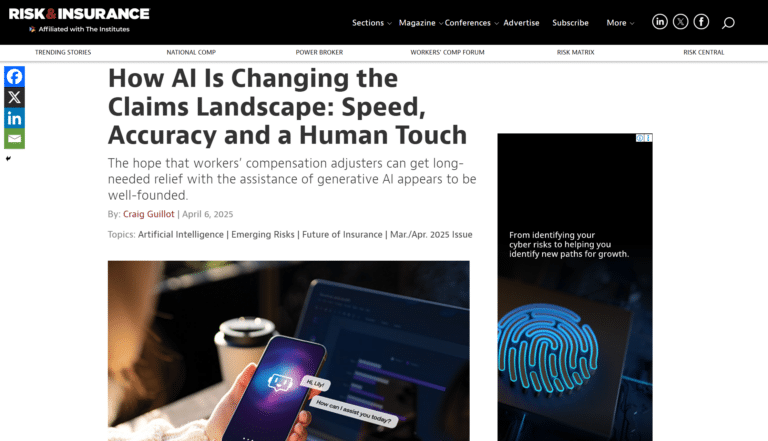As expected, momentum has picked up in the program market in 2021.
According to panelists during the mid-year Target Markets Program Administrators Association (TMPAA) Town Hall held in May, “the bar has risen” among administrators, leading to a divergence between those that have made investments in their businesses and those that have not. We at Gallagher Bassett are looking forward to seeing our customers, partners and prospects at the annual TMPAA meeting in October.
In the interim, let’s eavesdrop on a conversation between Amy O’Brien (VP, Alternative & Specialty Markets) and Jon Stambaugh (SVP, Carrier Practice) on the importance of claims outcomes and partnering with the right TPA in the program marketplace.
QUESTION: What is GB’s view on some of the observations shared in the recent Town Hall?
Stambaugh: The firming of the property and casualty market coupled with the impact of the pandemic put pressure on a number of our partners who market packaged line solutions. As a result, we experienced significant opportunities to collaborate on innovative strategies, e.g., leveraging GB’s analytics team, to differentiate our clients’ products and services and streamline operations to drive superior outcomes. Strategic utilization of data continues to be at the forefront of underwriting and claims leadership’s minds—we’re excited about the direction GB is going in this regard and more excited about the positive impact our solutions are having on our clients’ organizations.
O’Brien: The primary thing that I saw last year was that while some programs were developing, it was at a much slower pace than the five years prior. Those programs still ended up taking off, but not until the first half of 2021. It was interesting to see the variations in the impact COVID had on claim frequency and severity across industries, which did lead to our program partners seeking consultation from us on predicting post-pandemic claim volumes and planning for new program development. In the Town Hall, mention was made of building resiliency in program models and there were calls to consider outsourcing of claims in order to be more responsive to changes in the market. Program administrators have an opportunity to take advantage of a third-party administrator’s (TPA) innovative solutions suite, including their RMIS system, mobile apps and analytical capabilities.
QUESTION: Program Administrators and carriers often desire multiple years’ worth of loss history, and other data points, in order to make predictions about the future efficacy of a program. How can selecting the right TPA factor into the business plan?
O’Brien: Let’s first talk about why a TPA is a great partner for a program administrator and carrier. First, if the Program Administrator (PA) has influence over claims management, they are building their team, to their specifications, in line with their brand and market strategy. The right TPA will be approved by both the PA and the carrier for their demonstrated expertise and performance in the program market. Experience matters! For the PA, who controls the book of insureds and future pipeline, the right TPA supports their vision, collaborating with them on claim handling instructions and the features of the service offering that makes their program unique.
The right TPA’s claim management and RMIS systems will help satisfy the data requirements of both Underwriting and Actuarial via custom reporting across a wide range of dimensions. Performance benchmarking capabilities are also critical—especially for start-up programs. GB’s claim database consists of information spanning 60 years across all industries and lines of coverage. Leveraging a robust historical dataset can provide valuable insights and shape expectations for developing programs as well as mature portfolios.
QUESTION: Back to data—what data do you need from the PA and carrier to prepare a Service Plan?
O’Brien: If there is loss history available or an actuarial report, I’d like to see that and focus on the last three to five years; the more details the better. We strive to understand loss activity trends at the feature level (bodily injury, property damage, lost time indemnity, etc.). My goal is to develop a plausible loss projection for the next 12 months. When we are working with a start-up program and historical loss data is not available, I’d like to know the first year’s estimated premium projection by line of business, and underwriting guidelines such as geography, industry vertical and the loss control strategies which will be executed upon binding. Finally, what are the requirements of the GB service model—private labeling, reserving philosophy, data reporting, and other custom needs? These are just a few of the service elements that are profiled at the beginning of a partnership. GB has developed service standards that are specific to the program and carrier markets; however, we often find that customization of certain aspects of the service model is required.
QUESTION: Social inflation is a hot topic for claims and underwriting professionals—what are your thoughts?
Stambaugh: We have conducted a number of presentations over the last 15 months at industry conferences as to the impacts of social inflation and nuclear verdicts. This means that programs that have been consistently profitable for decades are susceptible to a material shock loss. It’s not a matter of whether the PA and their carrier partner are operating efficiently, but rather how the jury and/or jurisdiction is operating. Insureds in the transportation, real estate/hospitality and construction industries for example are very active in identifying loss control and early intervention solutions to mitigate this risk.
O’Brien: Jon is correct, and regardless of whether the program is a start-up or has been in place a long time, a few bad verdicts can damage the entire program’s performance. While rates could certainly be increased, rates can only do so much if a nuclear verdict ($10M or more) comes into play. Identifying the potential for those verdicts and using resolution strategies to avoid them is part of what we are focused on across our Carrier Practice and Specialty teams. We have had great success utilizing our Major Case Unit (MCU) and high-hazard-industry specialists to engage early in the lifecycle with claims that have the characteristics to develop adversely.
QUESTION: What about those of us setting up new programs? Any thoughts or tips from your vantage point?
O’Brien: First, don’t assume that a start-up is too small to benefit from a partnered model. Oftentimes, a partnership can fuel geographic growth and support product expansion in a more efficient fashion than an internal claims function can. I ask the PA to tell me what they want in today’s claims management model, and what they aspire to. What features do they need for a competitive advantage in the short and long term? Most importantly, start having strategic discussions with the TPA well in advance of launching the program. We try to play the long game, building for today with our eyes on the future, evolving the model as the PA achieves size and scale.
Stambaugh: I agree. Some of our largest and longest-running PA/MGA partnerships originated as start-ups. We feel a tremendous sense of pride when we work on these accounts, knowing we were with them in the very beginning and that we’ve played a significant part in their success.
QUESTION: Why is subject matter expertise so critical in the program space?
O’Brien: The decision to deploy capital and attract outside investors is oftentimes streamlined when experienced operators sit in leadership positions across functions such as Claims, Underwriting, Product Development and Finance. Now take it down to the product, line of business or industry niche level where subject matter expertise is key to attracting new customers, which fuels growth and hopefully a positive ROI.
Gallagher Bassett helps program administrators differentiate themselves—especially when it comes to the small and middle market. For example, it’s one thing to say you understand third-party liability, workers’ compensation or professional liability. But when you can say that you understand the nuances of those products and lines of business as they pertain to industry segments—retail/hospitality, healthcare, manufacturing, construction and transportation, for example—that is next-level credibility. Now you are providing strategic insights that improve outcomes and inform capital investments.
QUESTION: How do you partner with PAs and carriers who have their own claims departments?
Stambaugh: In many cases we are able to supplement and enhance the current capability. Our objective is to be a true extension of our partner’s risk management platform, and we engage in a variety of ways—supporting growth via the administration of new lines of business, specific jurisdictions or “overflow” claim volumes, for example. Our model may deliver additional capabilities the PA is looking for—whether operationally focused to drive internal cost efficiency or market-facing to deliver a unique customer experience. We work jointly with the PA and carrier to develop a model which provides best-in-class results and benefits the entire partnership.
QUESTION: Can partnering with a TPA enhance a program?
Stambaugh: If the TPA has the requisite market expertise, prioritizes quality, is a cultural fit and can demonstrate that their model drives enhanced outcomes, then yes, partnering with a TPA can take a program to the next level. Further, a strong focus on the policyholder’s experience is critical. If the PA wants to differentiate themselves in a competitive market, partnering with a TPA is one way to do it.
Lastly, the TPA’s offering should include excellent client service support, innovative solutions such as mobile applications and a deep analytics team committed to performance management. These elements are all embedded in GB’s Carrier Practice model and are constantly evolving with the requirements of our clients.
We’re looking forward to connecting with attendees of the upcoming TMPAA meeting in October. If you’d like to speak to one of our experts about how GB can help you improve and leverage your program—connect with us today.






